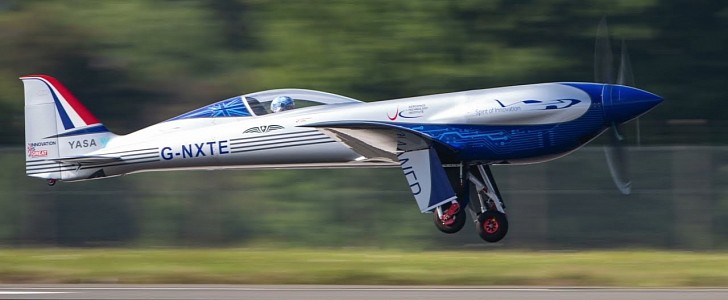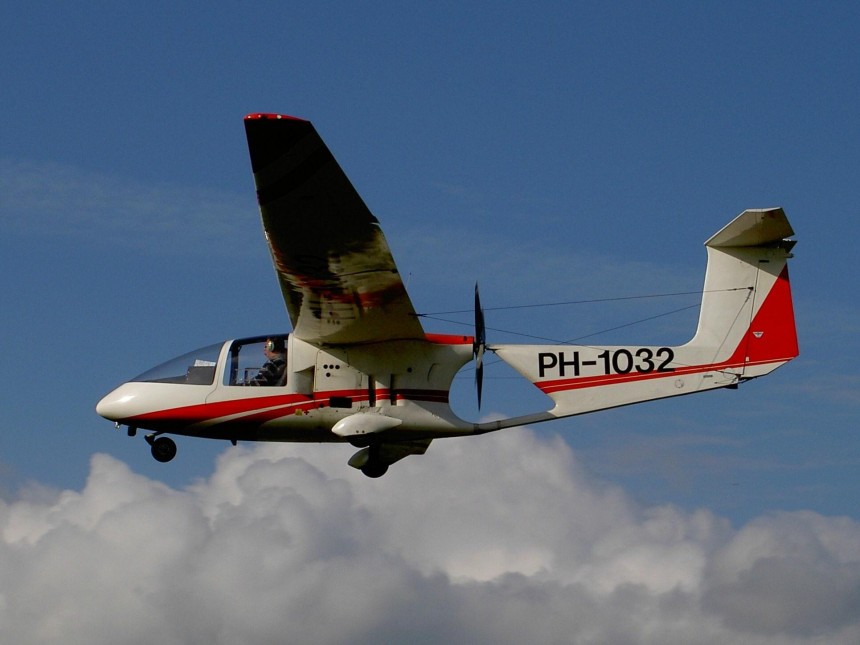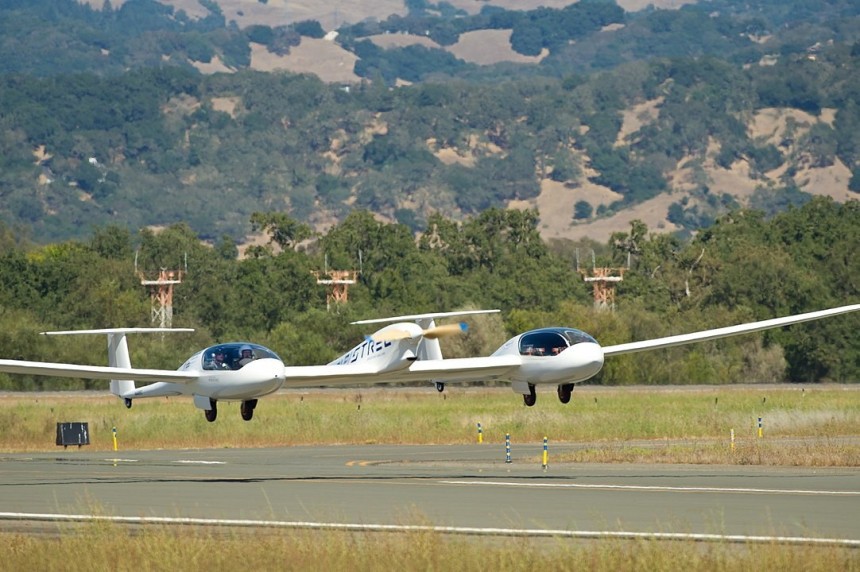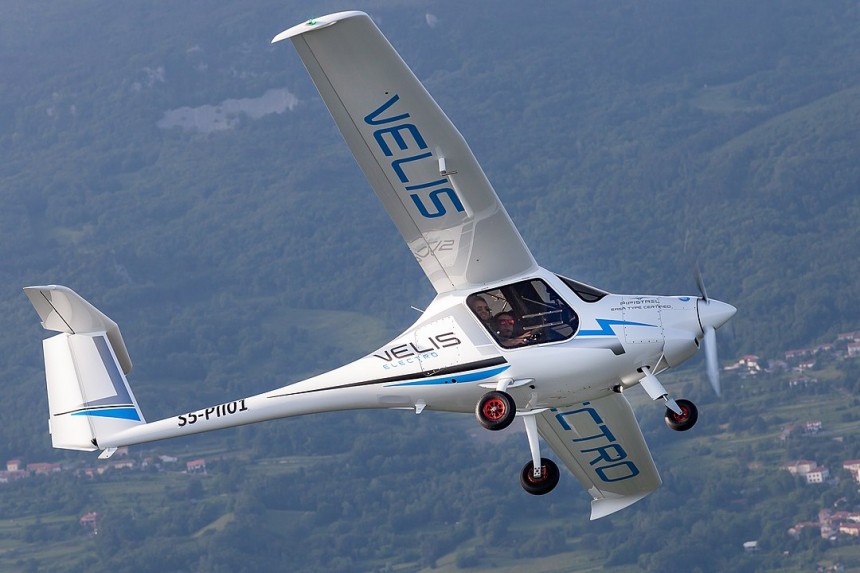Electric cars, be it of the battery or fuel cell variety, are all the rage. Much to the chagrin of petrolheads everywhere, it really looks like this avenue is the way forward, at least as far as four wheels are concerned.
The same can't be said for aviation. There just isn't the same level of interest, media buzz, or much attention at all given in the press to such a concept. But why is this? How can humanity justify giving EV aircraft the cold shoulder?
Well, the answer is surprisingly complicated, and it's challenging to write it off as one issue or another altogether. But perhaps flipping through the pages of aviation history might lend us some clues. As it turns out, the concept of an electric-powered aircraft isn't all that new, after all.
The world's first electrically propelled airship was flown well over a century ago by Gaston Tissandier of France on October 8th, 1883. Tissandier's airship was bourne aloft by lifting gas, most likely hydrogen, and given propulsion via large battery cell powering a series of propellers.
Even in these very early days, the bulk of batteries and power storage accumulators greatly limited the ship's range, reliability, and overall effectiveness. To this very day, many of the same problems Tissandier encountered on the very earliest EV aircraft still plague engineers trying to build them in 2022.
It's estimated that over 100 different EV prototypes are under development at the current moment. Many are from respected names in the aviation business, and others come from start-up companies with tiny development teams and even tinier budgets.
No matter which of these designs you choose, they're all trying to compensate for largely the same issues. Firstly, an EV airframe must be just as durable, dependable, and fail-safe as any big jetliner. It doesn't hurt to be even safer than the norm in this case, as lithium-ion battery fires are notoriously hard to put out.
Unlike jet propulsion, in which there's almost always plenty of power to go around, every single morsel of horsepower, thrust, or miscellaneous unit of power is more precious than the last. Do you think poor power to weight ratios are a bummer in a road car? Good luck even lifting off the ground in an airplane with insufficient power figures.
Just have a look at the performance figures from the Militky MB-E1, one of the very first all-electric heavier-than-air manned glider conversions of any significance. This two-seater leisure glider used an 8-10 kW Bosch KM77 electric motor, one of the most advanced of its time. Even so, the little plane could only muster 12 minutes of powered flight at a max altitude of just 380 meters (1,046 feet).
A full nine decades since the first electrically powered manned airships, it seemed as though EV airplane technology had barely evolved more than a couple of minutes. But there are, in fact, people out there today who claim the days of efficient, reliable EV aircraft are just around the corner.
Be it Boeing, with their Hydrogen/Oxygen powered fuel cell EVs, NASA's Pathfinder Solar UAV, lots of very valuable aerospace companies are taking cues from the auto industry and beginning to take EV aircraft design very seriously. But can you believe the very first all-electric consumer light aircraft didn't come from a billion-dollar conglomerate? It was, in fact, the Slovenians that finally cracked the code with the Pipistrel Velis Electro.
Powering this light aircraft is an in-house tuned 72-ish horsepower electric motor. With a max speed around 110 miles per hour, max altitude of 3,700 meters (12,000 ft), and flight endurance of just under an hour, it's not like it's going to perform just like a Cessna 172 at this juncture, but there's reason to suspect that things will only improve from here.
Because when the day comes that EV aircraft become equally as efficient and powerful as their piston and jet alternatives, it's going to be a landmark day in the history of aviation. Eventually, one day, the fossil fuels needed to power everything from airplanes to automobiles depletes to 0%. When that day comes, we're liable to look back at little planes like the Velis Electro as the moment we knew civil aviation wasn't going to go the way of the dinosaur.
As for anything beyond the lightest of light personal aircraft, we're still not quite there yet. The level of tech necessary to replace the engines on a Boeing 767 with electric turbines is still being worked out. But engineers like to make a habit out of surprising people.
In case you're a cynic, just remember that Rolls-Royce's single-seat, electric-powered Spirit of Innovation recently broke the zero-emission speed record for aircraft, automobiles, and all full EVs of any kind. Maxing out at a top speed of 556 kilometers (345 mph). So don't go around thinking it's impossible. If such a surprise like this does happen again, rest assured you'll hear about it right here on autoevolution.
Well, the answer is surprisingly complicated, and it's challenging to write it off as one issue or another altogether. But perhaps flipping through the pages of aviation history might lend us some clues. As it turns out, the concept of an electric-powered aircraft isn't all that new, after all.
The world's first electrically propelled airship was flown well over a century ago by Gaston Tissandier of France on October 8th, 1883. Tissandier's airship was bourne aloft by lifting gas, most likely hydrogen, and given propulsion via large battery cell powering a series of propellers.
Even in these very early days, the bulk of batteries and power storage accumulators greatly limited the ship's range, reliability, and overall effectiveness. To this very day, many of the same problems Tissandier encountered on the very earliest EV aircraft still plague engineers trying to build them in 2022.
No matter which of these designs you choose, they're all trying to compensate for largely the same issues. Firstly, an EV airframe must be just as durable, dependable, and fail-safe as any big jetliner. It doesn't hurt to be even safer than the norm in this case, as lithium-ion battery fires are notoriously hard to put out.
Unlike jet propulsion, in which there's almost always plenty of power to go around, every single morsel of horsepower, thrust, or miscellaneous unit of power is more precious than the last. Do you think poor power to weight ratios are a bummer in a road car? Good luck even lifting off the ground in an airplane with insufficient power figures.
Just have a look at the performance figures from the Militky MB-E1, one of the very first all-electric heavier-than-air manned glider conversions of any significance. This two-seater leisure glider used an 8-10 kW Bosch KM77 electric motor, one of the most advanced of its time. Even so, the little plane could only muster 12 minutes of powered flight at a max altitude of just 380 meters (1,046 feet).
Be it Boeing, with their Hydrogen/Oxygen powered fuel cell EVs, NASA's Pathfinder Solar UAV, lots of very valuable aerospace companies are taking cues from the auto industry and beginning to take EV aircraft design very seriously. But can you believe the very first all-electric consumer light aircraft didn't come from a billion-dollar conglomerate? It was, in fact, the Slovenians that finally cracked the code with the Pipistrel Velis Electro.
Powering this light aircraft is an in-house tuned 72-ish horsepower electric motor. With a max speed around 110 miles per hour, max altitude of 3,700 meters (12,000 ft), and flight endurance of just under an hour, it's not like it's going to perform just like a Cessna 172 at this juncture, but there's reason to suspect that things will only improve from here.
Because when the day comes that EV aircraft become equally as efficient and powerful as their piston and jet alternatives, it's going to be a landmark day in the history of aviation. Eventually, one day, the fossil fuels needed to power everything from airplanes to automobiles depletes to 0%. When that day comes, we're liable to look back at little planes like the Velis Electro as the moment we knew civil aviation wasn't going to go the way of the dinosaur.
In case you're a cynic, just remember that Rolls-Royce's single-seat, electric-powered Spirit of Innovation recently broke the zero-emission speed record for aircraft, automobiles, and all full EVs of any kind. Maxing out at a top speed of 556 kilometers (345 mph). So don't go around thinking it's impossible. If such a surprise like this does happen again, rest assured you'll hear about it right here on autoevolution.









